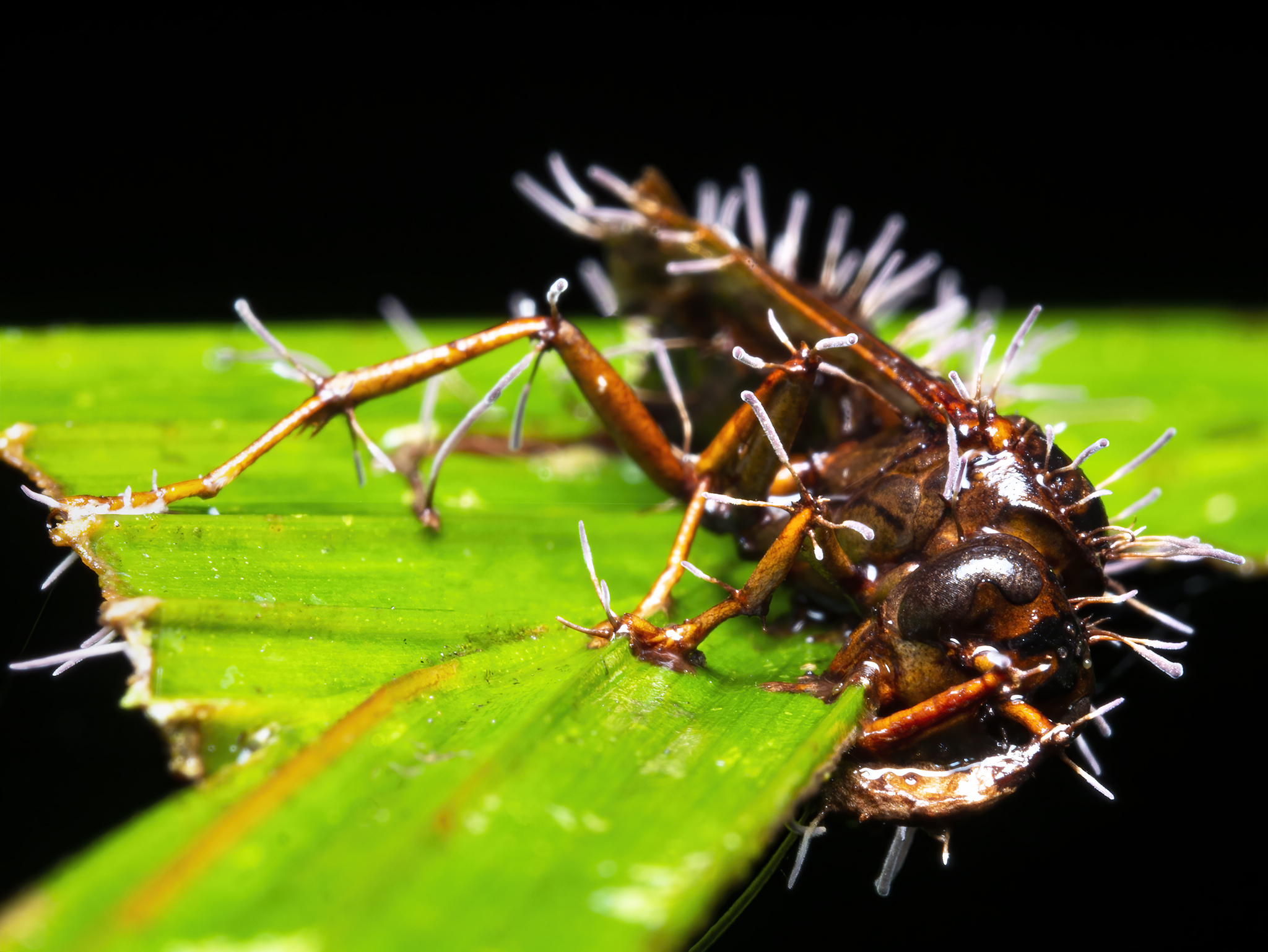Have you ever… ever felt like this?
Had strange things happen… Are you goin’ round the twist?
–
Apologies to all the Australian 90s kids who are going to have that stuck in their heads for a week, but I thought it was an apt way to introduce the absolutely diabolical creatures that are the protagonists of this post.
Today, we’re talking about fungi.
Now fungi are undoubtedly some of the most underrated organisms on the planet. So far, around 150,000 species have been described, but it’s estimated that the total number could be in the order of 2-3 million. In other words, 90% of the world’s fungi taxonomy is still to be worked out.
Fungi are in their own distinct kingdom, meaning that they are neither plants nor animals, but something different altogether. Consider the difference between a blade of grass and a California Redwood, or a mosquito and an African Elephant – that’s the level of variation present in the world of fungi as well. Indeed, the world’s largest organism is a Honey Mushroom, colloquially known as the ‘Humongous Fungus’, which covers 1,500 acres in the northwest US.
Some fungi act as telephone lines so that trees can talk to each other, others will completely dissolve your sense of identity and time for a little while if you eat them, and yet more have the very real potential to kill you.
However, while humans typically have to be dumb enough to eat the wrong mushroom to die from a fungus, life is infinitely more hazardous in the insect world.

You wake up one morning feeling a little strange, a little under the weather, a little fuzzy. It’s like there’s something gnawing away inside your mind, but you can’t quite put your finger on what it is – although that’s probably because you don’t have any fingers.
You decide to get on with the day, after all, you’re a Carpenter Ant, and the colony is relying on you. You ascend to your usual post high up in the jungle canopy, but as you start to work a wave of nausea overcomes you. You think back to that strange dust that was raining down on you recently, during a rare visit to the rainforest floor.
Suddenly, your body starts to violently convulse. The erratic and uncontrollable spasms throw you from your spot in the treetops, and you tumble helplessly to the ground. As you rise to your feet, you are no longer you anymore, nothing remains but a shell, a husk, a mere shadow of the ant that once was. Resistance is futile. The fungus has won.
Your former body begins to walk towards the nearest stem rising out of the soft, dense soil. You feel an overwhelming desire to climb it, so you do, until you’re around 25cm off the jungle floor – a curiously ideal height for the dispersal of fungal spores.
You walk along the nearest leaf, still fully conscious of your actions, but no longer in control of them. You bend down at the edge of the leaf, and an irresistible urge to bite it takes over. You try to pull back, as if part of you knows that it will be the last action you ever take – but it’s no use. You feel your jaws clamp down, locking your entire body in its final resting place.
Death comes quickly, and over the course of a week, the fungus completely takes over your body, growing inside of you before finally bursting out through your exoskeleton. Fully-matured, the fungus begins releasing spores, with the hopes that they will latch on to yet another hapless insect below, so that the entire cycle can begin anew…

The story of the infamous ‘Zombie Fungus’ (Ophiocordyceps unilateralis) is like something out of a horror movie. The spores of this particular parasitic fungus infect the brain of an unsuspecting Carpenter Ant and slowly take control of its body. Violent convulsions first throw the ant down to the rainforest floor, before the fungus steers the ant up a nearby stem and forces it to clamp its jaw onto a leaf. At this point the fungus kills the ant, explodes from its body, and begins releasing more spores so that it can infect more ants.
Yep. Terrifying.
Now as we discussed earlier, much of the world of fungi taxonomy is largely unexplored, so it’s difficult to say exactly how the insects featured in these photos died, and identifying the precise species of fungus is almost impossible. Undoubtedly, they all succumbed to some kind of parasitic fungal spore, which killed them and allowed the fungus to explode out of the incapacitated insect. Whether or not they had been ‘zombified’ prior to their death is a little tougher to determine, however, we have some interesting clues…
If you look closely, both the wasps featured in this article have their jaws firmly clamped down on the leaf that they died upon. If the parasitic fungus had simply killed the wasps where they were, it’s highly unlikely that they would have been chewing on a leaf at that exact moment, indicating that these wasps probably experienced some degree of ‘zombification’ prior to their death.

The two moths we’ve featured are a bit trickier, but one of them was located on a vertical branch, and the other was hanging upside-down from a leaf – suggesting that at a minimum, the fungus had probably induced some kind of forced clamping on both victims.
The world of parasitic fungi is a truly mind-boggling one that conjures up nightmarish scenarios and gruesome deaths. However, the good news is that none of these fungi have evolved to target creatures other than insects, and certainly no cases of human fungus zombies have been recorded… yet.
–
Wasps and moths parasitised by fungi (likely Ophiocordyceps sp.), Reserva Nacional Pacaya Samiria, Peru


